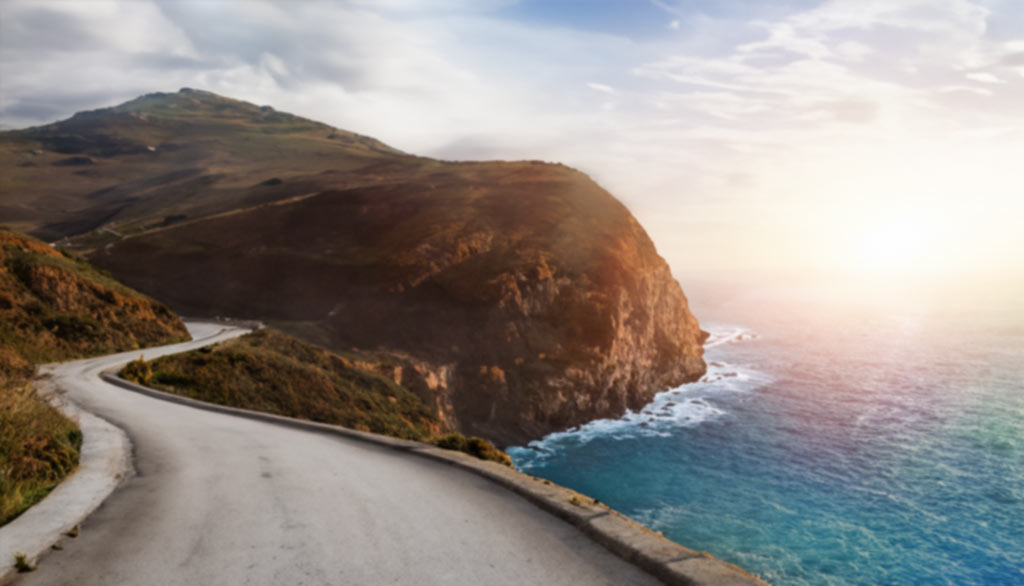Crete combines diverse landscapes, historical sites, and lively cities, attracting visitors interested in culture, nightlife, and activities. Karpathos offers untouched nature, traditional villages, and quiet beaches, appealing to those seeking relaxation and authenticity. Crete caters to adventure and exploration, while Karpathos provides a peaceful retreat.
Crete offers diverse activities and attractions. Visitors explore Crete’s history at the Palace of Knossos, Heraklion’s archaeological museum, and Venetian fortresses in Chania and Rethymno. Outdoor enthusiasts who visit Crete can hike Samaria Gorge or enjoy water sports at Balos, Elafonissi, and Vai beaches. Crete’s culinary scene invites tasting local delicacies like Dakos salad, Kalitsounia pastries, and Tsikoudia.
Karpathos provides an authentic Greek experience. Travellers engage with traditional life in Olympos, known for its architecture, customs, and matriarchal society. Popular activities include hiking, birdwatching, and exploring diverse flora and fauna. Karpathos is famous for beaches like Apella, Kyra Panagia, and Achata, offering clear waters and natural beauty. Visitors try windsurfing, snorkelling, or relax in the island’s peaceful atmosphere.
Does Crete have better beaches than Karpathos?
Crete and Karpathos both offer amazing beaches, but their appeal depends on personal preferences. Crete has a diverse coastline with famous beaches like Elafonissi, Falassarna, Vai and Balos. It also offers accessible and well-developed beach destinations. Karpathos, has secluded and less crowded beaches, such as Apella and Diakoftis, which features dramatic cliffs and a relaxed vibe.
Crete’s beaches attract larger crowds but are more accessible, whereas Karpathos offers quieter, more secluded shores that sometimes require navigating difficult roads or boat trips. Crete features dramatic gorges and cliffs, while Karpathos is distinguished by pine-covered hills and pebbly beaches. Crete provides extensive tourist infrastructure and amenities, while Karpathos maintains a more relaxed, less commercialized atmosphere.
Crete is preferred by visitors who prioritize accessibility, amenities, and variety of things to do. Karpathos is preferred If visitors seek seclusion and natural beauty, Karpathos may be preferable.
What are the best beaches in Crete?
Listed below are the best beaches in Crete:
- Elafonissi Beach: Elafonissi Beach is a beach at Elafonisi, Inachori 730 01, Greece, Crete, on the southwestern coast of Crete, known for its pink-hued sands and clear turquoise waters. The beach is part of a small, uninhabited island connected to the mainland by a shallow sandbar, creating a natural lagoon-like environment. Visitors can swim, snorkel, sunbathe on the pink sands, explore the dunes, and walk along the shallow sandbar connecting the island to the mainland. Boat tours and water sports activities are available. There is no admission cost to visit Elafonissi Beach, as it is a public beach. Visitors must pay for parking or boat tours, depending on how they access the beach. Elafonissi Beach is voted the best beach in the world for 2025, from Tripadvisor users.
- Vai Beach: Vai Beach, known as the Palm Forest, is at Epar.Od. Monis Toplous – Vai, Toplou 723 00, Greece, on the eastern coast of Crete, 25 kilometres (15 miles) east of Sitia and 94 kilometres (58 miles) east of Agios Nikolaos town. It is the largest natural palm tree forest in Europe, consisting of over 5,000 palm trees that stretch along the sandy beach and create a tropical paradise-like setting. Visitors can swim and sunbathe on the soft sandy beach, explore the palm tree forest, and enjoy the various amenities such as snack bars and coffee places located on the beach. There is no admission cost to visit Vai Beach, as it is a public beach. Visitors to Vai beach must pay for parking or other services if required.
- Falassarna Beach: Falassarna Beach is a beach at 734 00, Greece, on the western coast of Crete, 58 kilometres (36 miles) west of Chania. It is known for its long stretch of golden sand, crystal-clear waters, and a backdrop of olive groves and vegetation. The beach has organised sections with umbrellas, sunbeds, beach bars, and more secluded areas for those seeking privacy. Visitors can swim, sunbathe, snorkel, and enjoy various water sports activities like windsurfing and kitesurfing. They can also explore the nearby ruins of the ancient city of Falassarna, adding a historical element to their visit. There is no admission cost to visit Falassarna Beach, as it is a public beach. Visitors must pay for amenities like umbrellas, sunbeds, or water sports equipment rentals if desired.
- Balos Beach: Balos Beach is located at on the northwestern tip of Crete, near Kissamos. It features a turquoise lagoon surrounded by white and pink-hued sands, creating a beautiful landscape. The shallow, crystal-clear waters of the lagoon are perfect for swimming and snorkelling. Balos Beach’s remote location and unspoiled natural beauty make it one of Crete’s most photographed and iconic destinations. Visitors can swim and snorkel in the lagoon, sunbathe on the sands, explore the nearby Venetian castle ruins, and hike along the scenic trails that offer panoramic views of the beach and the Gramvousa Peninsula. Balos Beach is considered one of the best beaches in Crete. There is no admission cost to visit Balos Beach, as it is a public beach. Visitors must pay for parking or boat tours, depending on how they access the beach.
What are the best beaches in Karpathos?
Listed below are the best beaches in Karpathos:
- Apella Beach: Apella is considered one of the most beautiful beaches on Karpathos, 18 kilometres (11 miles) north of Pigadia, with clear turquoise waters, white pebbles, and a mountainous backdrop. Visitors to Apella Beach can participate in various activities such as swimming in the inviting waters, sunbathing on the pebbles, exploring the nearby caves and rock formations, or simply relaxing and taking in the scenic views. The beach offers a peaceful atmosphere, making it an ideal destination for those seeking a peaceful escape from city life. Apella Beach is a free public beach, allowing visitors to enjoy its natural beauty without any entrance fees.

- Kyra Panagia Beach: Kyra Panagia Beach is a small, secluded beach in the village of Kyra Panagia, 14 kilometres (8.7 miles) north of Pigadia, the main town of Karpathos. The cliffs that surround the cove create a striking contrast against the clear turquoise waters and soft golden sand. Perched atop one of the cliffs is the small church of Kyra Panagia (Virgin Mary), offering a beautiful vantage point of the beach. Visitors to Kyra Panagia Beach can participate in various activities such as swimming and opportunities to explore the nearby sea caves and rock formations. Hiking trails in the surrounding area offer views of the beach and the island’s rugged landscape, making it a paradise for outdoor lovers. Admission to Kyra Panagia Beach is free.
- Achata Beach: Achata Beach is a small beach known for its clear emerald waters, white pebbles, and cliffs, 13 kilometres (8 miles) north of Pigadia, the main town and capital of the island. Achata Beach is a pebble beach, with its shoreline adorned with smooth, white pebbles that gently slope into the shallow, clear waters. It is a popular spot for swimming, snorkelling, and sunbathing, attracting visitors worldwide. The beach is known for its marine life and sea caves waiting to be explored by adventurous visitors. There are hiking trails in the surrounding area that offer beautiful views of the beach and the island’s rugged landscape. Admission to Achata Beach is free, allowing visitors to enjoy its natural beauty without any entrance fees.
- Diakoftis Beach: Diakoftis Beach is a beach known for its white dunes, turquoise waters, and a unique lagoon-like setting on the southern coast of Karpathos, 20 kilometres (12.4 miles) southwest of Pigadia. The beach’s lagoon-like setting adds to its exotic beauty, making it one of the most beautiful and unique beaches in Karpathos and the Dodecanese islands, often compared to a Caribbean Beach. Diakoftis Beach is a sandy beach with shallow, calm waters, making it suitable for families with children. Visitors can swim, sunbathe, and explore the nearby sea caves. The beach is best for snorkelling and other water activities. There is a fee for renting sunbeds and umbrellas, but the beach is free to access.
- Lefkos Beach: Lefkos Beach is a long, sandy beach in the village of Lefkos, on the western coast of Karpathos, 31 kilometres (19.3 miles) northwest of Pigadia. It is known for its soft, white sand, crystal-clear waters, and beautiful views of the nearby islet of Sokastro. This beach is a popular destination for families, as it offers shallow, calm waters and a long stretch of soft sand. Visitors can enjoy swimming, sunbathing, and various water sports activities. The beach is a prime spot for watching breathtaking sunsets, with the islet of Sokastro. Visitors can find tavernas and cafes where they can savour traditional Greek cuisine and refreshments. Lekfos is a public beach and free for all to access and enjoy.
How to Get to Crete?
Listed below are the steps to get to Crete:
- By air: Travellers have two main airport options – Heraklion International Airport “Nikos Kazantzakis” and Chania International Airport “Ioannis Daskalogiannis”. Direct flights from many European cities are available to these airports, making it convenient for travellers within Europe to travel in the summer. The most common route for travellers from outside Europe is to fly into Athens and then take a connecting flight to Crete. The airports in Crete are well-connected to the major cities on the island, ensuring easy access to their final destination.
- By ferry from Athens (Piraeus port): The ferry journey takes 8-9 hours, and major ferry operators like Minoan Lines, Anek Lines, and Blue Star Ferries operate regular services on this route. The ferries from Piraeus arrive at the ports of Heraklion and Chania, the two largest cities on the island. Travelling by ferry allows travellers to enjoy the scenic beauty of the Aegean Sea and provides a unique experience for those who prefer a more leisurely mode of transportation.
- By ferry from other Greek islands: Crete is well-connected to other famous Greek islands, making it an ideal destination for travellers to island-hop. Ferry companies like SeaJets and Minoan Lines offer regular services from islands like Santorini, Mykonos, and Rhodes to ports in Crete, such as Heraklion, Chania, and Rethymno, in the summer months. These ferry routes provide a convenient way for travellers to explore multiple islands in one trip and experience the diverse beauty of the Greek archipelago.
How to Get to Karpathos?
Listed below are the steps to get to Karpathos:
- By Air: Karpathos has an airport (Karpathos Island National Airport – AOK) that serves as the primary entry point for most visitors to the island. It receives domestic flights from Athens throughout the year, with the flight duration being approximately 1 hour. Karpathos airport receives seasonal direct flights from several European cities, including Amsterdam, Munich, Frankfurt in the summer season. Airlines operating flights to Karpathos include Aegean Airlines, Olympic Air, Sky Express, and various charter airlines like Condorcqne Corendon.
- By Ferry: Karpathos is well-connected to the port of Piraeus in Athens, with regular ferry services operated by companies like Blue Star Ferries and Aegeon Pelagos. The ferry journey from Piraeus takes 18-24 hours, offering a scenic and leisurely way to reach the island. Karpathos has ferry connections to nearby islands such as Rhodes, Crete, Kasos, and Halki, facilitated by ferry companies like ANEK Lines and Blue Star Ferries. The two main ports on the island are Pigadia, the capital, and Diafani, a smaller port located on the northern side, providing convenient access points for travellers arriving by ferry.
- Combined Air and Ferry: Combining flights and ferries can be an excellent choice when planning a trip to Karpathos. This approach involves flying to a nearby island with an international airport, such as Rhodes or Crete, and then taking a ferry to Karpathos. Travellers can use a wider range of flight options and potentially find better deals on airfare. The ferry ride can be a scenic and enjoyable experience, allowing visitors to soak in the beauty of the Aegean Sea as they approach Karpathos.
- Private Boat/Yacht: Hiring a private boat or yacht to reach Karpathos can be a memorable way to start an island adventure. This option allows travellers to explore the island’s coastline and hidden coves at their own pace. Visitors can participate in activities like swimming, snorkelling, or simply basking in the sun while taking in the views of Karpathos’ rugged landscapes.

Is it Possible to Go to Karpathos and Crete?
Yes, traveling between Karpathos and Crete is possible via ferry services and plane. Ferries connect Heraklion and Sitia in Crete to Karpathos, with a journey time of approximately 6 hours and 30 minutes from Heraklion and around 5 hours from Sitia.
Blue Star Ferries and Anek Lines, through its subsidiary Aegeon Pelagos, operate ferry services between the islands. Booking ferry tickets in advance ensures availability, especially during peak travel seasons.
Traveling between Karpathos and Crete by plane is possible but requires indirect connections. SKY express and Aegean Airlines offer one-stop flights from Karpathos (AOK) to Heraklion (HER), while Olympic Air operates flights to Sitia. Most flights include a stopover at Rhodes or Athens. Flight to Karpathos prices start at 123 € (£110) for a return ticket, with June offering the lowest fares. Flights from Karpathos to Sitia via Kasos take about 1 hour and 10 minutes. Booking in advance is recommended, especially for peak months like July and August when prices increase.
How to get around Crete?
Getting around Crete is easy with various transportation options. Crete car rental is the easiest way to get around Crete. Major Cretan cities and airports host numerous car rental agencies like Rental Center Crete and Justrentals. Rural roads in Crete may be narrow and winding, necessitating cautious driving. KTEL public buses connect major cities and villages at a low cost but with inconvenient schedule.
Taxis provide convenient transport in urban areas, ideal for shorter trips; agreeing on fares before starting is advisable. Ferries connect Crete to other Greek islands and the mainland, with regular services from major ports like Heraklion and Chania to destinations such as Santorini and Athens.
Crete car rental prices vary but overall, renting a car is the most cost-effective way of getting around if you plan on spending a few days in Crete. It’s also convenient because you can travel at your own pace and you won’t have to wait for the bus or take taxis everywhere. A standard economy car can cost between 25 € ($27.12, £21.75) and 30 € ($32.54, £26.10) per day. Prices of a Crete car rental will vary depending on the type of car you get and how many days you’ll rent it for.
How to get around Karpathos?
Karpathos transportation options include rental cars, public buses, taxis, scooters, ATVs, boat tours, and hiking. Karpathos rental cars cost between 30 € to 60 € ($33–66, £26–52) per day, with agencies in Pigadia, Arkasa, and Amoopi. Smaller cars are recommended due to narrow roads, and early summer bookings are advised.
Public buses connect Pigadia to villages and beaches, with fares between 2 € and 9 € ($2.20–10, £1.70–7.80). The main bus station is in Pigadia on 28 October Street, but buses run infrequently, sometimes with only one return trip per day. Taxis are expensive and limited, with fewer than 20 available. A taxi from Pigadia to Olympos costs around 100 € ($110, £86), while the bus fare is about 7.50 € ($8.20, £6.50). Night tariffs apply.
Scooters and ATVs are useful for short trips, while boat tours provide access to beaches and Saria Island. Renting a car is the best way to get around Karpathos, due to limited public transport and expensive taxis. Buses in Karpathos are suitable for budget-conscious travelers staying in one area.
What can you Do in Crete?
People can do a lot of things in Create depending on their preferred activities. History and archaeology exploration is a thing that people must consider doing. One of the most prominent attractions in Crete is the ancient Palace of Knossos, believed to be the labyrinthine home of the legendary Minotaur. Visitors glimpse the grandeur of the Minoan civilization walking through its ruins. Numerous other archaeological sites beckon history enthusiasts across the island, including Phaistos and Maila.
Nature and adventure are other activities in Crete. The Samaria Gorge, one of Europe’s longest canyons, offers an exhilarating hiking experience amidst breathtaking scenery for people inclined toward nature. The island’s diverse landscapes range from snow-capped mountains to pristine beaches such as Elafonisi and Fragokastello, with its pink-hued sand, making Crete a haven for outdoor lovers.

Trying culinary delights is an extremely enjoyable experience in Crete. Cretan cuisine, a cornerstone of the Mediterranean diet, is another highlight. Local tavernas serve up delectable dishes made from fresh, local ingredients. The flavours of Crete are sure to tantalise the taste buds whether it’s a glass of ‘raki’ or a plate of ‘dakos.’
Discovering the culture and traditions of Crete is a fulfilling journey. The island’s rich history is evident in its myriad monasteries, churches, and Venetian fortresses. Towns including Chania and Rethymno, with their narrow streets and historical architecture, echo tales of bygone eras. Local festivals and music events provide a glimpse into the island’s vibrant cultural tapestry.
Beach and water activities are one of the most popular activities in Crete. Crete’s coastline is dotted with azure waters and beautiful beaches. There’s a spot for every kind of beach lover from the tranquil shores of Balos Lagoon to the lively beaches of Maila..
What can you Do in Karpathos?
Find below a list of the things to do in Karpathos.
- Apella Beach. Apella Beach features fine pebbles and golden sand, creating a perfect setting for swimming and snorkeling. The nearby 13th-century Church of Agios Loukas, built into the rocky landscape, enhances the area’s historical charm.
- Karpathos Best Beaches Boat Cruise. Take a full-day boat cruise to explore hidden coves and remote beaches, accessible only by sea, for a truly unforgettable seaside adventure.
- Agios Nikolaos Beach. Agios Nikolaos Beach in Arkasa is a sandy and shallow beach, perfect for families and sunset lovers seeking breathtaking views of Kasos island.
- Visit Olympos Village. Olympos Village is a living museum, where locals still wear traditional embroidered costumes, practice ancient crafts, and preserve historic windmills and Orthodox churches.
- Explore Traditional Villages. Visit Menetes, Aperi, Spoa, Mesochori, and Othos, each offering distinct architecture, cultural significance, and local traditions.
- Visit Karpathos Museums. Explore the Archaeological Museum in Pigadia, Folk Museum of Othos, and Chatzivasilis Museum in Olympos to gain insight into Karpathos’ historical, folkloric, and artistic heritage.
- Discover Ancient Sites. Walk through the ruins of Ancient Vrikous, Ancient Potideon in Pigadia, the Acropolis of Arkassa, and the archaeological site of Vroukounta, which showcase the island’s rich past and archaeological wonders.
- Hiking Tours. Embark on guided hikes through wild mountains, olive groves, and pine-clad valleys, leading to scenic spots like Agia Kyriaki Chapel, Limniotis Cave, and Lastos Mountain.
- Rock Climbing. Experience rock climbing on the limestone cliffs of Finiki Village, where professional guides ensure a thrilling yet safe adventure.
- Scuba Diving. Discover vibrant underwater caves, coral reefs, and rich marine life in the warm waters of the Karpathian Sea.
- Water Sports. Enjoy windsurfing and snorkeling at Karpathos’ southern beaches, where strong yet steady winds create ideal conditions for water sports enthusiasts.
- Saria Island Cruise. Take a boat trip to Saria Island, an uninhabited paradise, where you can swim in blue bays, sunbathe on pristine sands, and hike along the rugged coastline to explore the ruins of Palatia and Argos.
- Sokastro Islet. Visit Sokastro, a former peninsula of Karpathos, which was separated by an earthquake and is now home to Byzantine and Medieval ruins, offering a fascinating glimpse into the island’s historical past.
- Attend a Festival. Attend a Karpathos Festival such as the St. Panteleimonas Festival (July 26-28) and St. Georgios Methystis Festival (November 3), where you can enjoy live music, dancing, and authentic local delicacies.

What is Karpathos Known for?
Karpathos is know for its amazing beaches, preserved traditions, rugged landscapes and strong Meltemi winds.
Olympos village functions as a living museum where residents maintain ancient customs, wear traditional clothing, and use dialects that have disappeared elsewhere in Greece. Karpathos’s mountainous terrain and remote location have helped preserve its cultural heritage.
Karpathos is a premier windsurfing destination due to the consistent Meltemi winds, especially in the summer months. These strong winds, funneled through the island’s narrow geography, attract professional and amateur windsurfers worldwide.
Traditional Karpathian cuisine remains authentic, with dishes like makarounes (handmade pasta with caramelized onions) and fresh seafood served in family-run tavernas.
Archaeological sites, such as the submerged ruins of ancient Nisyros near the islet of Saria, highlight Karpathos’ historical significance. Local myths connect the Limniotis Cave system to the Greek underworld, adding to the island’s cultural depth.
What are Best Places to visit in Karpathos?
Listed below are the best places to visit in Karpathos:
- Olympos Village: Olympos is a traditional mountain village on the island of Karpathos, 58 kilometres (36 miles) northwest of Pigadia. The village is known for its well-preserved architecture, customs, and way of life. It is considered a living museum, with colourful houses, narrow alleys, windmills, and churches dating back centuries. Olympos has retained its authentic character, with locals still wearing traditional costumes and following age-old customs. The village has a unique matriarchal society and is home to over 80 windmills and watermills. Visitors can freely wander the alleys, visit the Church of the Dormition of the Virgin Mary, see the windmills, observe the local way of life, and attend cultural events and festivals.
- Apella Beach: Apella is considered one of the most beautiful beaches on Karpathos, 18 kilometres (11,18 miles) north of Pigadia, with clear turquoise waters, white pebbles, and a mountainous backdrop. Visitors to Apella Beach can participate in various activities such as swimming in the inviting waters, sunbathing on the pebbles, exploring the nearby caves and rock formations, or simply relaxing and taking in the scenic views. The beach offers a peaceful atmosphere, making it an ideal destination for those seeking a peaceful escape from city life. Apella Beach is a free public beach, allowing visitors to enjoy its natural beauty without any entrance fees.
- Pigadia: Pigadia is the main town and capital of Karpathos, with a harbour, winding streets, and a mix of traditional and modern elements in Pigadia, 85700 Karpathos Dodecanese. It is a cultural and historical attraction, offering visitors a view of the island’s past and present. Visitors can explore the old town, where traditional tavernas and shops line the narrow streets. The town also features the remains of the ancient city of Potideon, including an acropolis and archaeological site dating back to the 14th century BC. Admission to explore the town is free, but fees may apply for guided tours or visits to museums showcasing the island’s history and artefacts.
- Saria Island: Saria is a small, uninhabited island off the northern coast of Karpathos, north of Karpathos, separated by a narrow strait. The island is known for its beaches, sea caves, and natural beauty. It is a natural attraction, offering opportunities for exploring unspoiled landscapes, swimming, snorkelling, and hiking. Visitors to Saria Island can take boat tours from Pigadia, hike along the trails, swim and snorkel in the clear waters, explore the sea caves, and observe the local wildlife, which includes rare birds of prey and Mediterranean monk seals. The admission cost to visit Saria Island varies depending on the boat tour operator chosen, as there are no permanent facilities or services on the uninhabited island.
- Menetes Village: Menetes is a traditional mountain village on Karpathos, 8 kilometres (4.9 miles) southwest of Pigadia, the capital of Karpathos. The village is known for its well-preserved architecture, churches, and beautiful views. Visitors can visit the Church of the Dormition of the Virgin Mary is a must, which offers panoramic views of the village and the surrounding mountains. The village is home to a folklore museum, which showcases various artefacts, traditional costumes, and items that provide insight into the island’s rich cultural heritage. Admission to explore the village. Fees apply for guided tours or visits to the folklore museum, where a small admission charge may be required to support the preservation of the exhibits and artefacts.
How Big is Crete Compare to Karpathos?
Crete, the largest Greek island, spans approximately 8,336 km² (3,219 sq mi), making it 26 times larger than Karpathos, which covers 324.8 km². Crete also has a significantly higher population, with around 665,583 residents projected in 2025, compared to Karpathos’ 6,567 in 2021. Crete serves as a major economic and cultural hub, while Karpathos remains more rural, preserving traditional culture and unspoiled landscapes.
Crete is the largest Greek island and tje fifth-largest island in the Mediterranean, with a coastline of 1,046 km (650 mi). It is located in the eastern Mediterranean and lies 160 km (99 mi) south of mainland Greece. Karpathos is the second-largest island in the Dodecanese, spans 324.8 km², with its municipal unit covering 219.9 km². It is located in the southeastern Aegean and lies 47 km (29 mi) southwest of Rhodes.
Crete has a population of 624,408 people, with a projected increase to about 665,583 by 2025. Crete’s population density is 74.7 people per km². Karpathos had 6,567 residents according to 2021 census, though this number more than doubles in summer due to tourism and returning expatriates. The Karpathos – Kasos regional unit has a population density of 24.7 people per km².
What are the Advantages of Crete Over Karpathos?
Listed below are the advantages of Crete over Karpathos:
- Larger Size and More Developed Tourism Infrastructure: Crete is a much larger island than Karpathos, attracting over 5 million visitors per year. It has a well-established and robust tourism industry, offering a wide range of attractions, from ancient historical sites to modern entertainment facilities. The island is dotted with numerous hotels, resorts, and amenities catering to diverse tourist preferences, making it a popular and convenient destination for travellers.
- Better Connected with Direct International Flights: Crete enjoys excellent air connectivity, with direct international flights from many countries worldwide. This accessibility makes it a convenient destination for travellers from various parts of the globe, allowing for easy travel planning and reducing the need for multiple stopovers or connections.
- More Well-Known and Popular Destination: Crete has long been a major and world-famous tourist destination known for its rich history, landscapes, and culture. Its popularity has been well-established, attracting millions of visitors annually worldwide.
What are the Advantages of Karpathos Over Crete?
Listed below are the advantages of Karpathos over Crete:
- Less Crowded and More Authentic Experience: Karpathos is much less crowded with tourists than Crete, allowing visitors to experience a more authentic and traditional Greek island atmosphere. The island has managed to preserve its ancient traditions, local culture, and way of life better than the heavily touristed areas of Crete. This allows travellers to immerse themselves in genuine local customs and lifestyles, away from the overcrowded tourist hotspots.
- Unspoiled Natural Beauty: Karpathos has remained undeveloped and unspoiled, with beautiful beaches, mountain scenery, and natural environments. The northern part of the island and the nearby islet of Saria are protected nature reserves, safeguarding their biodiversity and ecosystems. This unspoiled natural beauty allows visitors to explore and appreciate the island’s raw, untamed landscapes and ecological treasures.
- Slower Pace and Relaxed Atmosphere: The island offers a slower, more relaxed pace of life compared to the busier resort areas of Crete. Visitors can unwind and engage in the traditional Greek island living Karpathos, allowing travellers to embrace the peacefulness of the island.
- Opportunities for Eco-Tourism and Outdoor Activities: Karpathos is an emerging eco-tourism destination with excellent hiking trails, birdwatching, and opportunities to experience rural village life. The island caters well to outdoor lovers with its diverse terrain suitable for activities like hiking, rock climbing, windsurfing, and diving. The unspoiled natural beauty and traditional way of life make Karpathos an ideal destination for eco-tourism and outdoor adventures.
- Easier to Explore the Entire Island: Karpathos’ smaller size (compared to Crete) makes it easier for visitors to explore more of the island during their stay, including the developed southern areas and the traditional northern villages. The compact nature of the island allows travellers to experience both the modern and traditional aspects of Karpathos within a single trip without the need for extensive travel between different regions.
How to Get to Karpathos if you are in Crete?
Listed below are the steps to get to Karpathos from Crete:
- First, Book Ferry Tickets: Travellers can book tickets online through ferry booking websites like FerryHopper, DirectFerries, or FerriesInGreece. These platforms allow travellers to check schedules, compare prices across different ferry operators like Blue Star Ferries, Anek Lines, and Aegeon Pelagos, and secure their desired departure times. It is highly recommended for travellers to book in advance, especially during the peak season, to ensure availability and secure better prices.
- Second, Ferry Routes and Schedules: The ferry routes and schedules from Crete to Karpathos vary depending on the departure port. Ferries in Heraklion operate 2-3 times per week, with a journey duration of 8 hours. Ferry companies like Anek Lines and Blue Star Ferries operate on this route. Ferries run less frequently at 1-2 times per week if departing from Sitia, located on the eastern side of Crete, but the journey is shorter, taking 4-5 hours.
- Third, Get to the Port: Travellers departing from Heraklion will need to head to the Heraklion Port near the city centre, while travellers with a departure point in Sitia must proceed to the Sitia Port on the eastern side of Crete. Travellers can use public transportation, such as buses, or rent a car to reach the port from their location in Crete, depending on their preference and convenience.
- Fourth, At the Port: Travellers should be at the port at least 1-2 hours before the ferry’s scheduled departure to allow ample time for check-in procedures and boarding. Travellers need to locate the check-in counters for their chosen ferry operator and present their booking confirmation or ticket. They should follow the instructions provided by the ferry staff regarding boarding procedures, including any specific instructions for loading vehicles onto the ferry, if applicable.
- Fifth, Onboard: Travellers can settle in after onboarding and enjoy the journey to Karpathos, which can take several hours, depending on their departure point. Travellers can use the various amenities available on board, such as restaurants, cafes, lounges, and outdoor decks, where they can relax, dine, or take in the views. Travellers can use this time to rest and sleep, especially if they are travelling overnight.
- Lastly, Arrive in Karpathos: The ferry will dock at either the Pigadia Port, which is the main port and in the capital, or the Diafani Port, on the northern side of the island. Travellers should follow the instructions provided by the crew for disembarking and retrieving any vehicles they may have brought along. Travellers will need to arrange transportation from the port to their accommodation in Karpathos. Options include taking a taxi, renting a car, or arranging for a pre-booked transfer service, depending on their preferences and budget.
How to Get to Crete if you are in Karpathos?
Listed below are the steps to get to Crete from Karpathos:
- First, Book Ferry Tickets: Travellers can book tickets online through ferry booking websites like FerryHopper, DirectFerries, or FerriesInGreece. These platforms allow travellers to check schedules, compare prices across different ferry operators like Blue Star Ferries, Anek Lines, and Aegeon Pelagos, and secure their desired departure times. It is highly recommended for travellers to book in advance, especially during the peak season, to ensure availability and secure better prices.
- Second, Ferry Routes and Schedules: The ferry routes and schedules from Karpathos to Crete vary depending on the departure port. Ferries in Karpathos operate 2-3 times per week, with a journey duration of 8 hours. Ferry companies like Anek Lines and Blue Star Ferries operate on this route. Ferries run less frequently at 1-2 times per week if departing from Sitia, located on the eastern side of Crete, but the journey is shorter, taking 4-5 hours.
- Third, Get to the Port: Travellers departing from Karpathos will need to head to Pigadia Port, in the city centre. Travellers from Diafani will need to go to the Diafani Port on the northern side of the island. Travellers can use public transportation, such as buses, or rent a car to reach the port from their location in Karpathos, depending on their preference and convenience.
- Fourth, At the Port: Travellers should be at the port at least 1-2 hours before the ferry’s scheduled departure to allow ample time for check-in procedures and boarding. Travellers need to locate the check-in counters for their chosen ferry operator and present their booking confirmation or ticket. They should follow the instructions provided by the ferry staff regarding boarding procedures, including any specific instructions for loading vehicles onto the ferry, if applicable.
- Fifth, Onboard: Travellers can settle in after onboarding and enjoy the journey to Karpathos, which can take several hours, depending on their departure point. Travellers can use the various amenities available on board, such as restaurants, cafes, lounges, and outdoor decks, where they can relax, dine, or take in the views. Travellers can use this time to rest and sleep, especially if they are travelling overnight.
- Lastly, Arrive in Crete: The ferry will dock at either the Heraklion Port or the Sitia Port, depending on the chosen route and destination. Travellers should follow the instructions provided by the crew for disembarking and retrieving any vehicles they may have brought along. Travellers will need to arrange transportation from the port to their accommodation in Crete. Options include taking a taxi, renting a car, or arranging for a pre-booked transfer service, depending on their preferences and budget.
Is Crete more expensive to visit than Karpathos?
Crete is generally more expensive to visit than Karpathos due to its larger tourism industry, broader accommodation options, and extensive activities.
Budget accommodation in Crete ranges from budget-friendly hostels at around 45 € ($49, £39) per night to high-end hotels with significantly higher prices. Karpathos offers more affordable lodging, especially in traditional villages, with fewer luxury options.
Public transport costs are similar, but Karpathos has fewer options. Transportation in Crete includes affordable public buses with fares between 2 € ($2.20, £1.70) and 3 € ($3.30, £2.60), while taxis cost around 1 € ($1.10, £0.85) to 2 € ($2.20, £1.70) per mile. Karpathos also has low-cost public transport, with bus fares ranging from 2 € ($2.20, £1.70) to 7 € ($7.70, £6).
Dining in Crete ranges from budget tavernas to luxury restaurants, whereas Karpathos focuses on traditional, lower-cost meals. Food in Crete includes budget-friendly tavernas and high-end restaurants. Karpathos, known for traditional dishes like makarounes and kopeles, offers family-run tavernas with lower prices.
Activities in Crete range from free beaches and hiking trails to paid museums and archaeological sites. Karpathos focuses on nature and local culture, with many low-cost or free attractions.
The average daily cost if being a tourist in Crete is around 180 € ($198, £157) per person, depending on the season and activities. Crete offers a broader range of amenities, while Karpathos provides a more traditional and secluded experience.
What is the best time to visit Crete?
The best time to visit Crete is during spring (April–May) and fall (September–October). These months offer warm, pleasant weather—perfect for sightseeing, hiking, and beach trips—without the intense summer heat. The skies are sunny, the air is dry, and the crowds are much smaller than in the peak months of June through August.
What is the best time to visit Karpathos?
The best time to visit Karpathos depends on weather, activities, and crowd levels. Karpathos in late spring (May–June) and early autumn (September–October) offer warm temperatures (23–27°C / 73–81°F), fewer tourists, and ideal swimming conditions.
Summer (July–August) is peak season with hot weather, crowded beaches, and excellent windsurfing. Winter (November–April) brings cooler temperatures, increased rainfall, and limited tourist services. Mid-August is ideal for cultural events like the Panagias festival.
Are there Buses in Karpathos?
Yes, Karpathos has a public bus service operated by KTEL, connecting Pigadia, the capital, with villages, beaches, and the airport. The main bus station in Pigadia serves as the island’s transportation hub.
KTEL buses run multiple routes, including Pigadia to Afiartis and the airport, Amoopi, Olympos, Diafani, Kyra Panagia, and Lefkos. Frequency depends on the season, with more routes operating between June and mid-September. In the low season, some routes run only once daily, while winter schedules are limited to school buses.
Buses ticket prices range from €2 to €9 ($2.20–$9.80, £1.70–£7.70) per trip, depending on distance. Travel times vary, with Pigadia to Amoopi taking 12–15 minutes, Pigadia to the Karpathos airport taking 35–40 minutes, and Pigadia to Olympos taking 60–70 minutes Karpathos KTEL can be reached at +30 22450 22338 or ktelkarpathou@gmail.com .
Does Karpathos have Markets?
Yes, Karpathos has traditional markets and modern shops offering a variety of goods.
Markets sell authentic local products, including Karpathian wine, raki, olives, honey, woven textiles, hand-painted pottery, and traditional sweets. The central market in Pigadia is a key cultural shopping destination for fresh produce, spices, and pastries.
Local markets, known as “agora”, sell fresh produce, handmade textiles, and traditional food products. Kipseli Greek Traditional Market in Pigadia, located at 2η Μαρτίου 1, is the most popular one.
Most shops are in Pigadia (the capital), offering clothing, shoes, books, and souvenirs. Olympos village is a marketplace for traditional crafts, musical instruments, and handmade leather boots called “stivania”. Menetes specializes in Karpathian products such as herbal goods and textiles, while Amoopi features beachside boutiques selling swimwear and souvenirs.
Is Crete Worth Visiting over Karpathos?
Yes, travellers should Choose Crete over Karpathos. Crete is preferred by visitors who look for extensive historical sites, landscapes, modern amenities, and better accessibility. The Palace of Knossos, Heraklion Archaeological Museum, Balos and Elafonissi beaches, and Samaria Gorge offer cultural and natural attractions.
Crete has a well-developed tourism infrastructure, with abundant accommodations, restaurants, and transportation options, making travel more convenient. Museums, botanical gardens, and traditional villages enhance cultural experiences, while frequent flight and ferry connections improve accessibility.
Karpathos provides a more authentic Greek island experience with preserved customs, folklore, and minimal commercialization. Local villages like Olympos maintain traditional Greek culture, with local music and dances still actively practiced. Karpathos’s smaller size and remote location limit mass tourism. Mountains, pine forests, and exotic beaches add to its natural appeal. Villages such as Menetes, Aperi, and Othos showcase traditional Greek life.
A 6.5-hour ferry journey connects Heraklion and Karpathos for one who wants to visit both Greek islands.
Published on .








